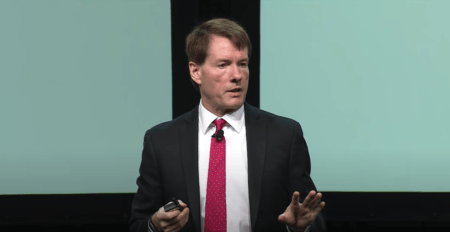In a recent interview with Yahoo Finance, Steve Sosnick, Chief Market Strategist at Interactive Brokers, discussed China’s new stimulus measures and their potential impact on both the Chinese and global economies. With China’s economy facing immense pressure, the People’s Bank of China (PBOC) has rolled out a series of policies aimed at economic recovery. Sosnick believes that U.S. investors should be paying close attention, as China’s economic health plays a crucial role in shaping the global financial landscape.
China’s Economy Under Pressure
According to Sosnick, the Chinese economy is currently under far more strain than Beijing may be letting on. He highlighted long-standing rumours that China’s economic data had been somewhat “massaged,” indicating the true state of the economy could be worse than reported. Sosnick noted that the fact that the PBOC is enacting sequential, large-scale stimulus measures shows that Chinese leadership is growing increasingly nervous about the state of their economy.
For U.S. investors, Sosnick argued that it is critical to root for China’s success in its economic recovery efforts. He reminded viewers that following the global financial crisis, China’s rapid economic growth had positive spillover effects on the rest of the world. On the flip side, if China’s economy were to shrink dramatically, Sosnick warned that this could lead to negative ripple effects across global markets, including the U.S. economy.
The Effectiveness of China’s Stimulus
Despite China’s stimulus efforts, Sosnick noted that there is skepticism over whether the measures taken are sufficient to address the underlying issues in China’s economy. While there was some initial optimism following the stimulus announcements, Sosnick pointed out that some experts believe more aggressive action may be necessary. He referred to a common saying among analysts: “They brought out a bazooka when they needed a Howitzer,” suggesting that the current measures may not be enough to reverse the downward economic trend.
However, Sosnick acknowledged that there are mixed reports, with some officials believing that the stimulus will have a meaningful impact in the coming months. The question remains whether this optimism will be reflected in the markets, as Sosnick noted that the initial excitement following the stimulus news was short-lived.
What’s Next for the U.S. Market?
Looking ahead, Sosnick believes that the next major catalyst for the market will be Friday’s Personal Consumption Expenditures (PCE) data. This data is closely watched by the Federal Reserve and provides key insights into inflation trends. Sosnick emphasized that the PCE is the Fed’s preferred inflation gauge, and the market will be watching closely to see if inflation is trending toward the Fed’s 2% target.
If the PCE data shows that inflation is continuing to cool, Sosnick said this could provide a positive boost to the market. However, any deviation from expectations could result in significant market volatility. In addition to the PCE report, Sosnick pointed out that the upcoming jobs data will also be critical in shaping investor sentiment. The labor market has shown signs of weakening, and this data will offer further insight into whether the economy is slowing down more than expected.
Where Should Investors Look Now?
When it comes to investment strategy, Sosnick advised that value stocks with sustainable dividends offer the most attractive opportunities in the current environment. He explained that both growth stocks and value stocks have become fully valued, making it harder to find good deals in the market. However, Sosnick believes that value-oriented stocks, especially those with solid dividend yields, are more likely to provide a combination of capital appreciation and income.
For investors looking to navigate potential market volatility, Sosnick recommended focusing on stocks that offer decent yields and have the cash flow to support their dividend payouts. He warned against investing in companies that are borrowing heavily to maintain their dividends, as this adds an extra layer of risk.
In the current climate, where interest rates are potentially heading lower, Sosnick argued that locking in stable dividend yields is a wise strategy for long-term investors. This approach provides both income and protection against market downturns, making it a prudent choice in uncertain times.
Featured Image via Pixabay









